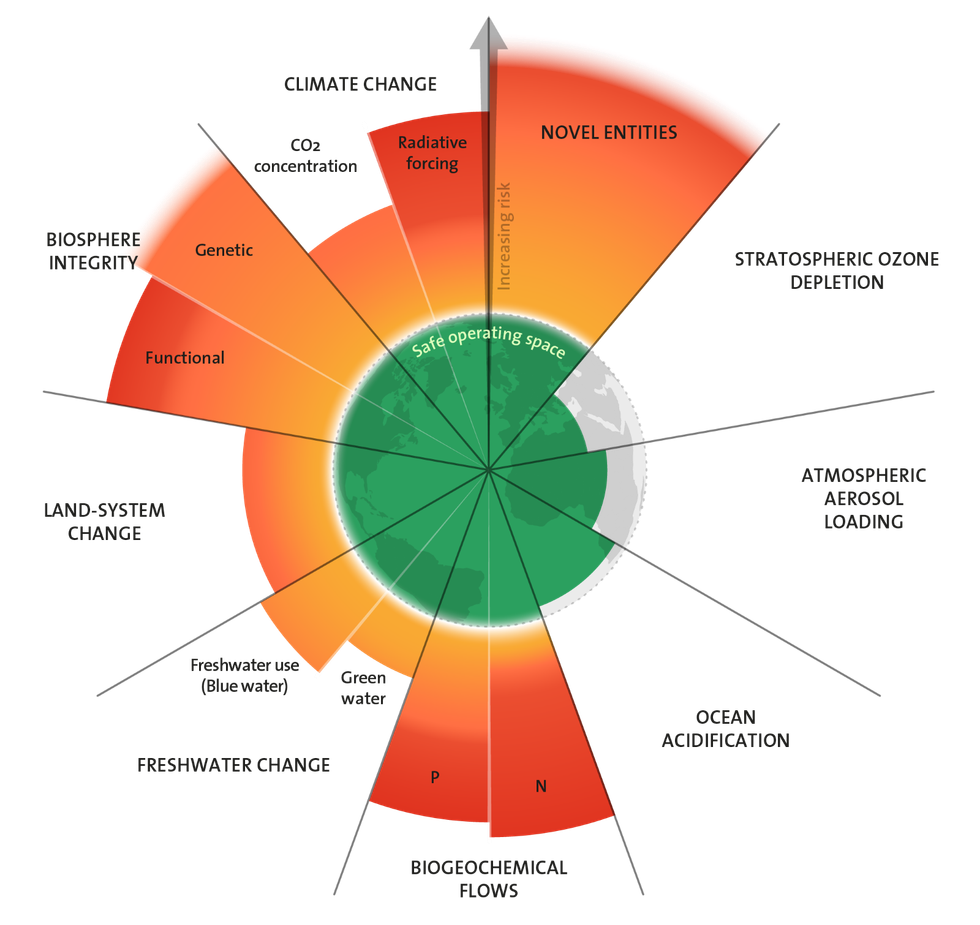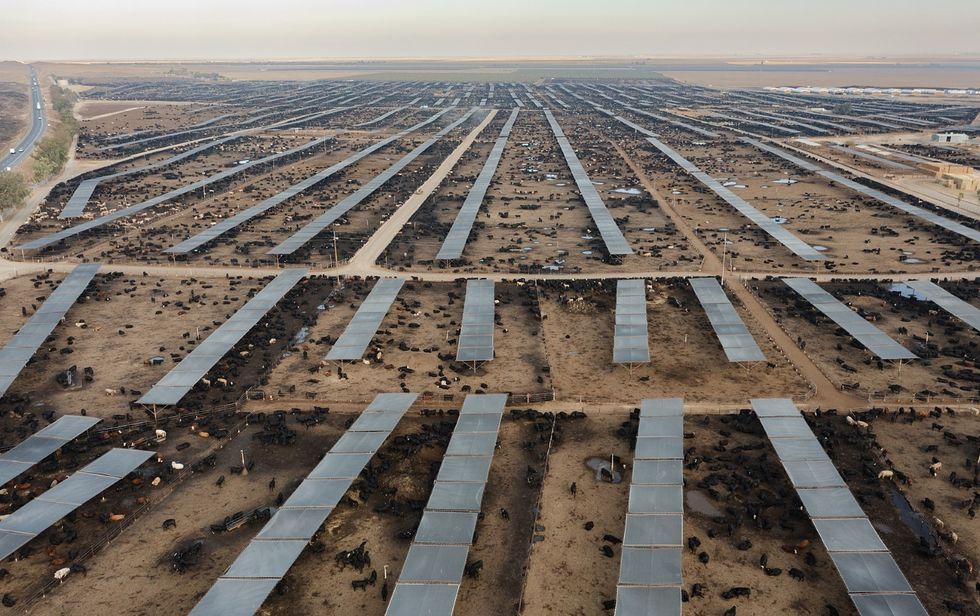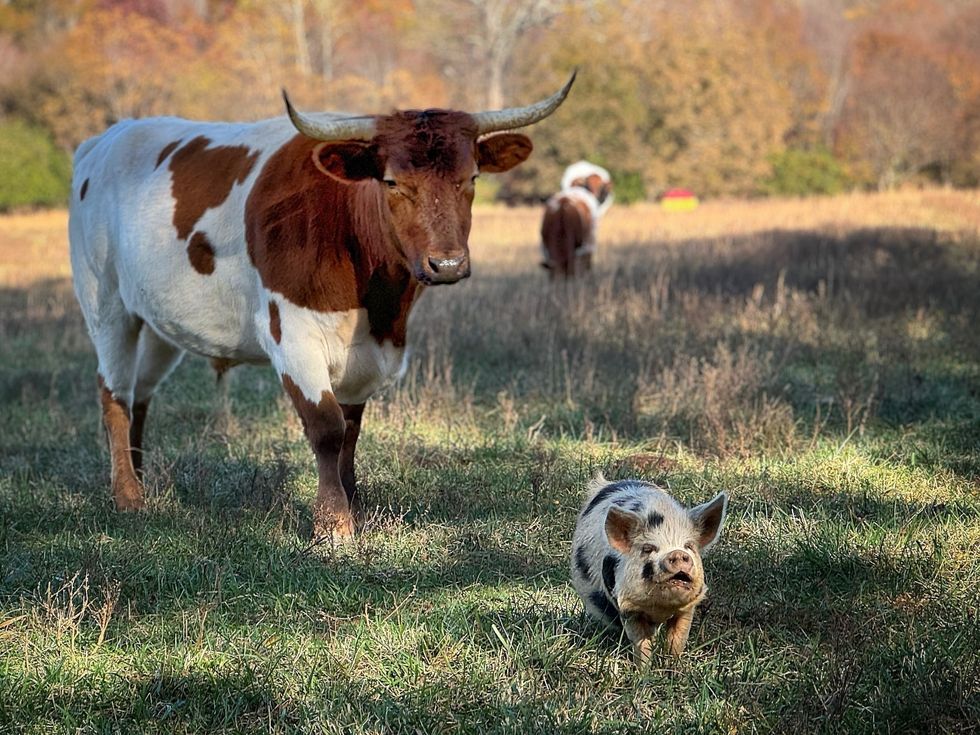Report Details 'Vicious Cycle' Between Climate and Biodiversity Crises
"What we need is real system change that gets to the root of the current economic, social, and political systems that prioritize maximizing profits over people and the environment," said the report's lead author.
As the world celebrated the 55th annual Earth Day, one leading green group released a report exploring how the fossil fuel-driven climate emergency and species loss impact each other, existing policies, and "false" and "real" solutions to the intertwined crises.
The Friends of the Earth International (FOIE) report, Climate and Biodiversity in Freefall, says that "the vicious cycle between climate change and biodiversity loss is harmful and dangerous. Climate change negatively impacts biodiversity in multiple ways."
"For example, ecosystems become unbalanced as different species respond and adapt to climate change in different ways and at different paces," the publication notes. "Pests become more prevalent, destroying entire ecosystems, while ocean acidification threatens coral reefs and the many species that depend on them."
"We can forge a path toward system change that protects our planet's ecosystems and provides a sustainable future for peoples and communities."
"At the same time, biodiversity loss further destabilizes the climate," the report continues. "Since life on Earth contains significant amounts of carbon, biodiversity loss also means the loss of important carbon reservoirs. Biodiversity loss will further reduce carbon storage in ecosystems, and we are fast approaching tipping points like the Amazon dieback where forests may turn from carbon sinks into carbon sources."
After sections that lay out how the climate and biodiversity crises affect each other, the report tackles problematic climate projects and policies: tree planting and monoculture tree plantations; carbon offsetting; nature-based solutions; geoengineering; bioenergy, including with carbon capture and storage; nuclear energy; and hydropower dams.
Tree plantations, for example, "are essentially 'green deserts,' often made up of a single non-native species, and thus require extensive pesticide use, provide no habitat for other species, and are highly prone to fire," the document details.
Projects labeled nature-based solutions, the report adds, "are primarily focused on compensating for climate emissions, and often serve as greenwashing tools for heavily polluting corporations, allowing them to continue their harmful practices under the guise of environmental responsibility."
There is also a section on United Nations policies, which points out that although the two crises "each have their own U.N. treaty—the Framework Convention on Climate Change (UNFCCC) and the Convention on Biological Diversity (CBD)—extremely little attention has been paid to the interlinkages."
"While the connection is often made at the discourse level, a systemic view that addresses climate and biodiversity simultaneously is largely absent in real policies," adds the U.N. section of the report, which was published just over six months away from the next United Nations climate summit, COP30, in Brazil.
In this blog, @nelemarien.bsky.social highlights how current climate policies worsen the climate and biodiversity crises, with disastrous consequences for communities & ecosystems! Read more here: www.foei.org/system-chang... #SystemChange #biodiversityloss #climatechange
[image or embed]
— Friends of the Earth International (@foeint.bsky.social) April 22, 2025 at 5:53 AM
The next section of the report, promoting what FOEI dubs "real solutions," calls for "rigorous regulation of all sectors that harm biodiversity," an end to financing for "environmentally destructive corporate activities," a moratorium on harmful "development" projects, ditching industrial agriculture in favor of agroecology, and investments in measures such as "reducing or eliminating pesticides and other toxins, curbing noise and light pollution, and encouraging native species to thrive."
The report also stresses the need for broader impact assessments and that "the impacts of the biodiversity and climate crises hit Indigenous Peoples and local communities (IPLCs) and poor and marginalized people hard by undermining their livelihoods, jeopardizing food sovereignty, and worsening general living conditions." It calls for protecting these groups, including by "recognizing collective rights to land and community governance of territories."
On the climate front, the document emphasizes the necessity of "a rapid and just energy transition" that guarantees energy sufficiency for all; ensures direct democratic control and governance; guarantees the right to free, prior, and informed consent; and prioritizes "renewable technology that is climate resilient, locally appropriate, low impact, and not harmful to biodiversity."
Nele Marien, the report's lead author and FOEI's forests and biodiversity program coordinator, said in a Tuesday statement that "the intertwined crises of climate change and biodiversity loss call for a fundamental rethinking of our approach."
"What we need is real system change that gets to the root of the current economic, social, and political systems that prioritize maximizing profits over people and the environment," Marien asserted. "By recognizing these interconnections between the climate and biodiversity crises, halting detrimental climate policies, and supporting Indigenous knowledge, we can forge a path toward system change that protects our planet's ecosystems and provides a sustainable future for peoples and communities, especially those in the Global South who are most affected."



 The 2023 update is shown to the Planetary boundaries. (Graphic: Azote for Stockholm Resilience Centre, based on analysis in Richardson et al 2023/ CC BY-NC-ND 3.0)
The 2023 update is shown to the Planetary boundaries. (Graphic: Azote for Stockholm Resilience Centre, based on analysis in Richardson et al 2023/ CC BY-NC-ND 3.0) Thousands of cattle mill about or huddle under shade structures at a large cattle ranch where they spend the last few months of their lives before going to slaughter in Coalinga, California, USA, 2022. (Photo: Vince Penn / We Animals)
Thousands of cattle mill about or huddle under shade structures at a large cattle ranch where they spend the last few months of their lives before going to slaughter in Coalinga, California, USA, 2022. (Photo: Vince Penn / We Animals) A horned Pineywoods bull watches a white and black spotted Kune Kune pig at a regenerative farm in North Carolina, USA. (Photo: Mike Hansen / Getty Images)
A horned Pineywoods bull watches a white and black spotted Kune Kune pig at a regenerative farm in North Carolina, USA. (Photo: Mike Hansen / Getty Images)